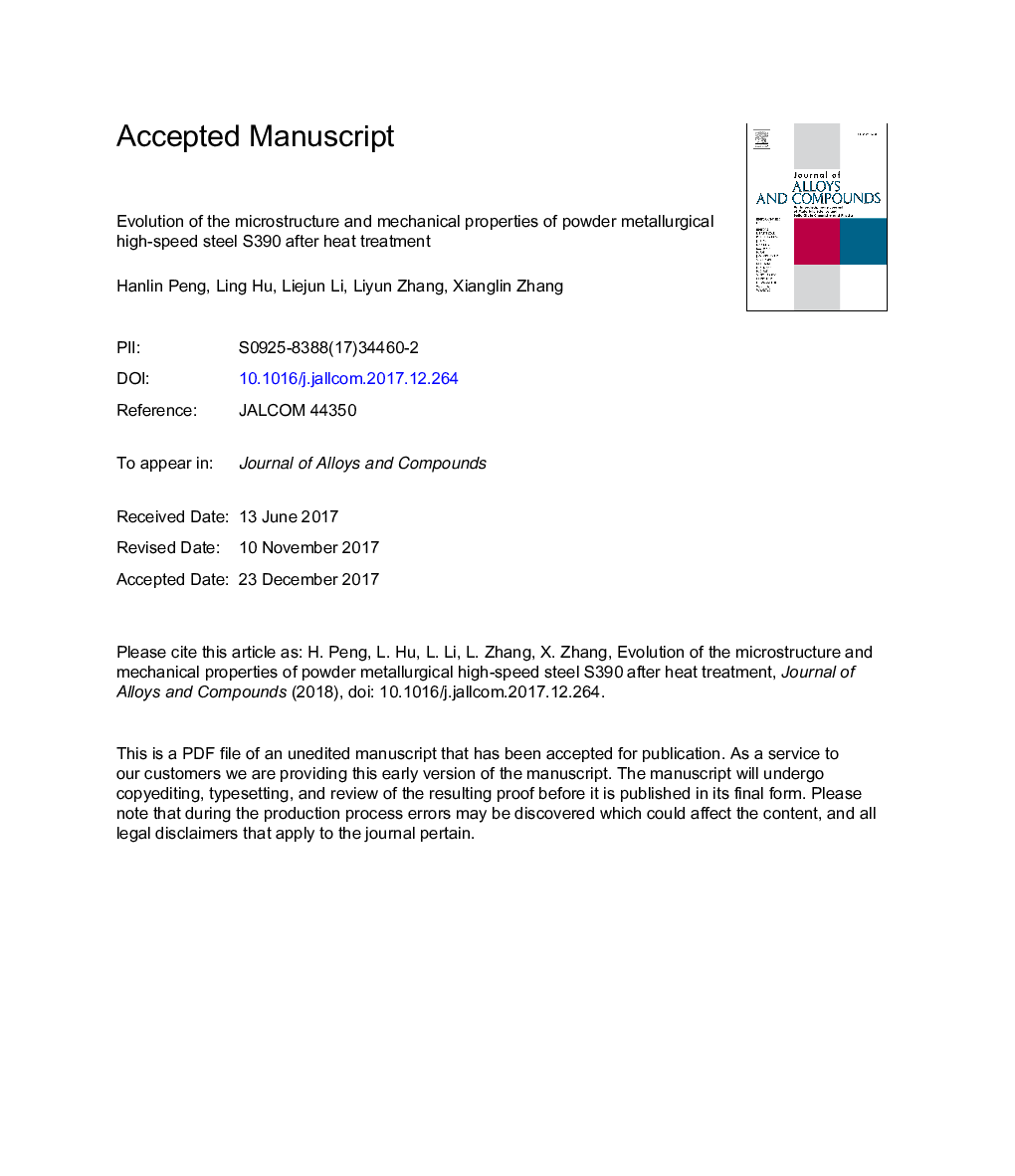| Article ID | Journal | Published Year | Pages | File Type |
|---|---|---|---|---|
| 7993871 | Journal of Alloys and Compounds | 2018 | 14 Pages |
Abstract
The evolution of microstructure and mechanical properties of commercial powder metallurgical high-speed steel S390 steel after different heat treatments were studied. The results show that the austenitic transformation of the alloy starts at 1110 K (837 °C), whereas the martensite transformation starts at 624 K (351 °C). The density of hot isostatic pressed alloy is around 99.2 vol%, and the average pore size is less than 1 μm. There are two types of metal carbides (MC): vanadium-rich MC-type and tungsten-rich M6C-type. After proper heat treatment, the alloys exhibit a high Rockwell-C hardness of 64.4 and compressive strength of 3870 MPa, as well as an ultra-large fracture strain of 22.7% under compression, which results from the changes in the size and distribution of the carbides during heat treatment. In addition, the experimental results concerning the dissolution of vanadium carbide varying with temperature are similar to the results obtained by thermodynamic analysis. Finally, for the experimental iron alloy, deep cryogenic treatment during the triple tempering treatment process has little effect on the compressive strength and room temperature hardness.
Related Topics
Physical Sciences and Engineering
Materials Science
Metals and Alloys
Authors
Hanlin Peng, Ling Hu, Liejun Li, Liyun Zhang, Xianglin Zhang,
